Resources
About Us
Organic Farming Market Size, Share & Forecast by Farming Type (Crop, Livestock, Aquaculture), Method (Crop Rotation, Composting, Biological Pest Control), Input Type (Organic Seeds, Biofertilizers), Application (Fruits & Vegetables, Grains, Dairy) - Global Forecast to 2032
Report ID: MRAGR - 1041465 Pages: 250 Mar-2025 Formats*: PDF Category: Agriculture Delivery: 24 to 72 Hours Download Free Sample ReportOrganic Farming Market Size & Forecast
The organic farming market was valued at $7.05 billion in 2024. This market is expected to reach $22.7 billion by 2032 from an estimated $8.0 billion in 2025, at a CAGR of 16.1% during the forecast period from 2025 to 2032.
This growth is driven by increasing consumer awareness about the health benefits of organic products, rising demand for sustainable agricultural practices, and supportive government policies promoting organic farming. Organic farming avoids the use of synthetic fertilizers, pesticides, and genetically modified organisms (GMOs), focusing instead on natural processes and biodiversity to maintain soil health and crop productivity.
Key Findings
Organic Farming Market Drivers
Supportive Government Policies Promoting Organic Farming
Governments globally are introducing measures to facilitate the use of organic farming methods due to their implications for environmental stewardship, community health, and rural growth. Such policies are in the form of financial support like subsidies, grants, and tax credits to farmers adopting organic practices. For example, the Common Agricultural Policy (CAP) of the European Union offers direct payments to farmers who use organic farming methods, and the U.S. Department of Agriculture (USDA) has cost-sharing programs for certifying organic products. Numerous governments are also spending on research and development to advance organic farming methods and enhance crop yields.
Regulatory systems and certification schemes are likewise being created to assure the genuineness and quality of organic products, enhancing the confidence of consumers. For instance, USDA Organic label and the EU Organic logo offer clear label standards that enable consumers to easily distinguish authentic organic products. Additionally, governments are encouraging organic agriculture by way of awareness creation campaigns and training interventions to educate farmers on sustainable agriculture. Governments of developing countries like India are also launching initiatives such as India's Paramparagat Krishi Vikas Yojana (PKVY) to enable small farmers to adopt organic farming. These policies not only motivate farmers to adopt organic farming but also foster a positive market ecosystem for organics, promoting growth in the organic farming industry. Generally, government policies are at the forefront of speeding up the implementation and scale-up of organic farming across the world.
Organic Farming Market Opportunities
Rising Consumer Demand for Organic Products
The increasing consumer awareness about the health benefits of organic products is a significant driver of the organic farming market. Consumers are becoming more informed about the advantages of organic foods, which are grown without synthetic pesticides, herbicides, or genetically modified organisms (GMOs). This absence of harmful chemicals reduces the risk of health issues such as cancer, hormonal disruptions, and neurological disorders, making organic products a safer choice. Additionally, studies suggest that organic fruits, vegetables, and grains may contain higher levels of essential nutrients like antioxidants, vitamins, and minerals, further enhancing their appeal. Many consumers also believe that organic products taste better due to natural growing practices and the lack of synthetic additives.
Rising awareness of the health risks associated with conventional farming, such as pesticide residues and antibiotic resistance, has further fueled the demand for organic products. Media coverage, educational campaigns, and celebrity endorsements have played a crucial role in spreading knowledge about the benefits of organic farming. The growing prevalence of chronic diseases like obesity and diabetes has also led consumers to seek healthier, chemical-free food options. Furthermore, the shift toward preventive healthcare and the emphasis on transparency through clear labeling and traceability have strengthened consumer trust in organic products. Demographic trends, such as the preference of millennials and Gen Z for health and sustainability, along with rising disposable incomes and e-commerce growth, have further boosted the market. Overall, this heightened awareness is driving the expansion of the organic farming industry globally.
Organic Farming Market Trends
Integration of Biologicals with Precision Agriculture
The convergence of precision agriculture and biologicals is a revolutionary trend transforming the agriculture biologicals market and the organic agriculture industry. Precision agriculture utilizes high-tech tools such as GPS, IoT, drones, and sensors to maximize farm practices, whereas biologicals such as biopesticides, biofertilizers, and biostimulants provide natural solutions for pest control and plant growth promotion. The convergence of these two methodologies allows farmers to utilize biological inputs more effectively with less wastage and greater impact. For example, sensors and drones can monitor plant health and soil status with great accuracy, enabling targeted use of biologicals where the crop needs them most. Through this integration, crop yields are enhanced and improved while environmental footprint is reduced through less wastage in input use.
This trend is highly significant in the organic farming industry. Organic farming is largely dependent on biological inputs to promote soil health and pest control without the use of chemical synthetics. Precision agriculture makes such inputs more effective by providing accurate and timely application, which is essential in organic systems where error margins are minimal. For instance, precision equipment allows organic farmers to locate pest hotspots and target biopesticides precisely, without using more than is necessary. Moreover, precision agriculture's data-based insights allow organic farmers to make crop rotation, irrigation, and nutrient adjustments more optimal, further increasing the sustainability of such practices. In aggregate, the combination of biologicals and precision agriculture is fueling efficiency, productivity, and ecologic sustainability for the organic farm business, and is a top trend for the future of agriculture.
Organic Farming Market Analysis: Top Market Opportunities
The Organic Crop Farming Segment is Expected to Dominate the Organic Farming Market in 2025
Based on farming type, in 2025, the organic crop farming segment is expected to account for a larger share of the organic farming market. The large share of this segment is majorly due to strong demand from consumers for organic fruits and vegetables, cereals, and pulses, which are viewed as healthier and greener than conventionally produced crops. The shift to organic farming of crops is comparatively simple, consisting mainly of adjustments in soil management and pest control, thus making it more applicable to farmers. Besides that, firm government support in the form of subsidies and incentives, as well as highly developed market structure and certification schemes, also promotes the use of organic crop farming.
However, the organic aquaculture segment is expected to grow rapidly during the forecast period. This growth is fueled by increasing global demand for seafood, coupled with concerns about overfishing, pollution, and the use of antibiotics in conventional aquaculture. Consumers are increasingly drawn to organic seafood due to its health benefits and sustainable production methods. Innovations in sustainable aquaculture practices, such as integrated multi-trophic aquaculture (IMTA), along with the development of organic certification programs, are making organic aquaculture more viable and attractive to producers and consumers alike.
The Organic Fertilizers and Biofertilizers Segment is Expected to Dominate the Organic Farming Market in 2025
Based on agricultural input type, in 2025, the organic fertilizers and biofertilizers segment is expected to account for a larger share of the organic farming market. Organic fertilizers and biofertilizers such as compost, manure, and microbial products are needed for soil fertility and health in organic systems. Organic fertilizers and biofertilizers give nutrients to plants that are critical in addition to soil structure and microbial improvement, thereby being the cornerstone of organic cultivation practices. Their dominance is motivated by the basic imperative to displace synthetic fertilizers in organic systems and the relatively easy adoption process for farmers converting to organic practices.
On the other hand, the biopesticides and bio-controls segment is experiencing rapid growth due to increasing demand for sustainable pest management solutions. As organic farming prohibits the use of synthetic pesticides, biopesticides derived from natural sources like bacteria, fungi, and plants have become critical for controlling pests and diseases. The growing awareness of the environmental and health risks associated with chemical pesticides, along with stricter regulations on synthetic inputs, has accelerated the adoption of biopesticides. Additionally, advancements in microbial engineering and formulation technologies have improved the efficacy and reliability of these products, making them more attractive to farmers.
While organic seeds and planting materials are essential for organic farming, their adoption is often limited by availability and higher costs. Co-formulants and adjuvants play a supporting role in enhancing the effectiveness of organic inputs but remain a smaller segment. Organic animal feed is growing steadily, particularly in organic livestock farming, but its growth is constrained by the higher costs of organic feed production and certification
Geographical Analysis
Europe Dominates the Organic Farming Market in 2025
Based on geography, the organic farming market is majorly segmented into North America, Europe, Asia-Pacific, Latin America, and the Middle East & Africa. In 2025, Europe is expected to account for the largest share of the global organic farming market. This dominance is driven by strong consumer demand for organic products, supportive government policies, and well-established certification systems. Countries like Germany, France, Italy, and Spain are leaders in organic farming within Europe. Germany, for instance, is one of the largest markets for organic food, with consumers prioritizing health and sustainability. France has implemented ambitious national plans, such as the "Ambition Bio 2022" program, to promote organic farming and increase the share of organic land. Italy and Spain are major producers of organic fruits, vegetables, and olive oil, benefiting from favorable climatic conditions and a strong export market. The European Union’s Common Agricultural Policy (CAP) provides significant financial support to organic farmers, including subsidies and grants, further boosting the sector. Additionally, stringent EU regulations and certification standards ensure the quality and authenticity of organic products, fostering consumer trust. The combination of high consumer awareness, government support, and robust infrastructure makes Europe the global leader in the organic farming sector.
However, Asia-Pacific is experiencing rapid growth during the forecast period. fueled by rising awareness among consumers, growing disposable incomes, and policy support. India, China, and Australia are leading the region's expansion. India has become a significant player, and the government encourages organic farming under schemes such as the Paramparagat Krishi Vikas Yojana (PKVY) and Mission Organic Value Chain Development for North Eastern Region (MOVCDNER). India is also one of the biggest exporters of organic products, including basmati rice, tea, and spices. China, with its expansive arable land, is quickly embracing organic farming to serve the increasing domestic market for healthy and safe food, and to take advantage of export markets. Australia, in contrast, boasts one of the largest tracts of organic cropland in the world, fueled by robust export demand for organic meats, dairy products, and grains. The growth of the region is also driven by urbanization, shifting diets, and growing food safety and environmental concerns. The growth of e-commerce websites has also driven organic products closer to consumers, thereby driving market growth further. All these reasons combined make the Asia-Pacific region the most rapidly growing organic farming market.
Key Companies
The report includes a competitive landscape based on an extensive assessment of the key strategic developments that led market participants to adopt over the past three years (2022-2025). The key players profiled in the global organic farming market report are Bayer AG (Germany), BASF SE (Germany), UPL Limited (India), Corteva Agriscience (U.S.), Syngenta AG (Switzerland), Marrone Bio Innovations, Inc. (U.S.), Koppert Biological Systems (Netherlands), Valent BioSciences LLC (U.S.), Novozymes A/S (Denmark), Certis Biologicals (U.S.), Lallemand Inc. (Canada), Andermatt Biocontrol AG (Switzerland), BioSafe Systems LLC (U.S.), and Isagro S.p.A (Italy)
Organic Farming Market Research Summary
|
Particulars |
Details |
|
Number of Pages |
250 |
|
Format |
|
|
Forecast Period |
2025–2032 |
|
Base Year |
2024 |
|
CAGR |
16.1% |
|
Market Size in 2025 |
USD 8 Billion |
|
Market Size in 2032 |
USD 22.7 Billion |
|
Segments Covered |
Market by Farming Type
Market by Method
Market by Input Type
Market by Application
Market by Distribution Channel
|
|
Countries Covered |
North America (U.S., Canada), Europe (Germany, U.K, France, and Rest of Europe), Asia-Pacific (China, India, Japan, Australia, and Rest of Asia-Pacific), Latin America (Brazil, Mexico, and Rest of Latin America), and e Middle East & Africa |
|
Key Companies |
Bayer AG (Germany), BASF SE (Germany), UPL Limited (India), Corteva Agriscience (U.S.), Syngenta AG (Switzerland), Marrone Bio Innovations, Inc. (U.S.), Koppert Biological Systems (Netherlands), Valent BioSciences LLC (U.S.), Novozymes A/S (Denmark), Certis Biologicals (U.S.), Lallemand Inc. (Canada), Andermatt Biocontrol AG (Switzerland), BioSafe Systems LLC (U.S.), and Isagro S.p.A (Italy) |
Key questions answered in the organic farming market report:
The global organic farming market size was valued at $7.05 billion in 2024.
The market is projected to grow from $8.0 billion in 2025 to $22.7 billion by 2032.
The organic farming market analysis indicates significant growth, reaching $22.7 billion by 2032, at a compound annual growth rate (CAGR) of 16.1% from 2025 to 2032.
The key companies operating in the organic farming market include Bayer AG (Germany), BASF SE (Germany), UPL Limited (India), Corteva Agriscience (U.S.), Syngenta AG (Switzerland), Marrone Bio Innovations, Inc. (U.S.), Koppert Biological Systems (Netherlands), Valent BioSciences LLC (U.S.), Novozymes A/S (Denmark), Certis Biologicals (U.S.), Lallemand Inc. (Canada), Andermatt Biocontrol AG (Switzerland), BioSafe Systems LLC (U.S.), and Isagro S.p.A (Italy)
A prominent market trends in organic farming are rising consumer demand for organic products, technological advancements, and growth of organic processed foods
By farming type, the organic crop farming segment is forecasted to hold the largest market share; by input type the organic fertilizers & biofertilizers segment is expected to dominate the market; and by application, the organic fruits and vegetables segment is poised to record the dominant position in the market.
By region, Europe will hold the largest organic farming market share in 2025. However, Asia-Pacific is experiencing rapid growth during the forecast period. fueled by rising awareness among consumers, growing disposable incomes, and policy support.
The primary drivers of the organic farming market growth include increasing consumer awareness about the health benefits of organic products, rising demand for sustainable agricultural practices, and supportive government policies promoting organic farming.
1. Market Definition & Scope
1.1. Market Definition
1.2. Market Ecosystem
1.3. Currency
1.4. Key Stakeholders
2. Research Methodology
2.1. Research Approach
2.2. Process of Data Collection and Validation
2.2.1. Secondary Research
2.2.2. Primary Research/Interviews with Key Opinion Leaders from the Industry
2.3. Market Sizing and Forecast
2.3.1. Market Size Estimation Approach
2.3.1.1. Bottom-up Approach
2.3.1.2. Top-down Approach
2.3.2. Growth Forecast Approach
2.4. Assumptions for the Study
3. Executive Summary
3.1. Overview
3.2. Segmental Analysis
3.2.1. Organic Farming Market Analysis, by Farming Type
3.2.2. Organic Farming Market Analysis, by Method
3.2.3. Organic Farming Market Analysis, by Input Type
3.2.4. Organic Farming Market Analysis, by Applicatin
3.2.5. Organic Farming Market Analysis, by Distribution Channel
3.3. Regional Analysis
3.4. Key Players & Competitive Scenario
4. Market Insights
4.1. Overview
4.2. Drivers
4.2.1. Increasing Consumer Preference for Organic Food Products
4.2.2. Government Initiatives & Subsidies Supporting Organic Farming
4.2.3. Rising Awareness of Soil Health and Sustainable Agriculture
4.3. Restraints
4.3.1. High Production Costs Compared to Conventional Farming
4.3.2. Limited Availability of Certified Organic Inputs
4.4. Opportunities
4.4.1. Advancements in Organic Farming Techniques & Technologies
4.4.2. Growing Investments in Organic Supply Chains & Certification
4.5. Challenges
4.5.1. Lack of Uniform Global Regulations for Organic Certification
4.5.2. Limited Access to Organic Farming Education and Training
4.6. Trends
4.6.1. Increasing Use of Digital Technologies in Organic Farming
4.6.2. Expanding Retail and E-commerce Presence for Organic Products
4.7. Regulatory Analysis
4.7.1. USDA Organic (U.S.)
4.7.2. EU Organic Farming Regulations (Europe)
4.7.3. JAS Certification (Japan)
4.7.4. Other Global Organic Farming Standards
5. Global Organic Farming Market Assessment, by Farming Type
5.1. Introduction
5.2. Organic Crop Farming
5.3. Organic Livestock Farming
5.4. Organic Aquaculture
5.5. Agroforestry & Mixed Organic Farming
6. Global Organic Farming Market Assessment, by Method
6.1. Introduction
6.2. Crop Rotation & Companion Planting
6.3. Green Manuring
6.4. Composting & Vermicomposting
6.5. Biological Pest Control
6.6. Integrated Organic Farming
7. Global Organic Farming Market Assessment, by Input Type
7.1. Introduction
7.2. Organic Seeds & Planting Materials
7.3. Organic Fertilizers & Biofertilizers
7.4. Biopesticides & Bio-controls
7.5. Co-formulants & Adjuvants
7.6. Organic Animal Feed
8. Global Organic Farming Market Assessment, by Application
8.1. Introduction
8.2. Organic Fruits & Vegetables
8.3. Organic Grains & Cereals
8.4. Organic Dairy & Meat Production
8.5. Organic Herbal & Medicinal Crops
9. Global Organic Farming Market Assessment, by Distribution Channel
9.1. Introduction
9.2. Direct Sales (Farmers' Markets, Cooperatives)
9.3. Retail Sales (Supermarkets, Specialty Stores)
9.4. Online Platforms & E-commerce
10. Organic Farming Market Assessment–by Geography
10.1. Overview
10.2. North America
10.2.1. U.S.
10.2.2. Canada
10.3. Europe
10.3.1. Germany
10.3.2. France
10.3.3. U.K.
10.3.4. Rest of Europe (RoE)
10.4. Asia-Pacific
10.4.1. China
10.4.2. India
10.4.3. Japan
10.4.4. Australia
10.4.5. Rest of Asia-Pacific (RoAPAC)
10.5. Latin America
10.5.1. Brazil
10.5.2. Mexico
10.5.3. Rest of Latin America (RoLATAM)
10.6. Middle East & Africa
11. Competitive Landscape
11.1. Overview
11.2. Key Growth Strategies
11.3. Competitive Benchmarking
11.4. Competitive Dashboard
11.4.1. Industry Leaders
11.4.2. Market Differentiators
11.4.3. Vanguards
11.4.4. Contemporary Stalwarts
11.5. Market Share/Ranking Analysis, by the Key Players, 2024
12. Company Profiles (Business Overview, Financial Overview, Product Portfolio, Strategic Developments, and SWOT Analysis*)
12.1. Bayer AG (Germany)
12.2. BASF SE (Germany)
12.3. UPL Limited (India)
12.4. Corteva Agriscience (U.S.)
12.5. Syngenta AG (Switzerland)
12.6. Marrone Bio Innovations, Inc. (U.S.)
12.7. Koppert Biological Systems (Netherlands)
12.8. Valent BioSciences LLC (U.S.)
12.9. Novozymes A/S (Denmark)
12.10. Certis Biologicals (U.S.)
12.11. Lallemand Inc. (Canada)
12.12. Andermatt Biocontrol AG (Switzerland)
12.13. BioSafe Systems LLC (U.S.)
12.14. Isagro S.p.A (Italy)
12.15. Other Emerging Players
13. Appendix
13.1. Available Customization
13.2. Related Reports
LIST OF TABLES
Table 1. Global Organic Farming Market, by Farming Type, 2023-2032 (USD Million)
Table 2. Organic Crop Farming Market, by Region/Country, 2023-2032 (USD Million)
Table 3. Organic Livestock Farming Market, by Region/Country, 2023-2032 (USD Million)
Table 4. Organic Aquaculture Market, by Region/Country, 2023-2032 (USD Million)
Table 5. Agroforestry & Mixed Organic Farming Market, by Region/Country, 2023-2032 (USD Million)
Table 6. Global Organic Farming Market, by Method, 2023-2032 (USD Million)
Table 7. Organic Farming Market for Crop Rotation & Companion Planting, by Region/Country, 2023-2032 (USD Million)
Table 8. Organic Farming Market for Green Manuring, by Region/Country, 2023-2032 (USD Million)
Table 9. Organic Farming Market for Composting & Vermicomposting, by Region/Country, 2023-2032 (USD Million)
Table 10. Organic Farming Market for Biological Pest Control, by Region/Country, 2023-2032 (USD Million)
Table 11. Organic Farming Market for Integrated Organic Farming, by Region/Country, 2023-2032 (USD Million)
Table 12. Global Organic Farming Market, by Input Type, 2023-2032 (USD Million)
Table 13. Organic Seeds & Planting Materials Market, by Region/Country, 2023-2032 (USD Million)
Table 14. Organic Fertilizers & Biofertilizers Market, by Region/Country, 2023-2032 (USD Million)
Table 15. Biopesticides & Bio-controls Market, by Region/Country, 2023-2032 (USD Million)
Table 16. Co-formulants & Adjuvants Market, by Region/Country, 2023-2032 (USD Million)
Table 17. Organic Animal Feed Market, by Region/Country, 2023-2032 (USD Million)
Table 18. Global Organic Farming Market, by Application, 2023-2032 (USD Million)
Table 19. Organic Farming Market for Organic Fruits & Vegetables, by Region/Country, 2023-2032 (USD Million)
Table 20. Organic Farming Market for Organic Grains & Cereals, by Region/Country, 2023-2032 (USD Million)
Table 21. Organic Farming Market for Organic Dairy & Meat Production, by Region/Country, 2023-2032 (USD Million)
Table 22. Organic Farming Market for Organic Herbal & Medicinal Crops, by Region/Country, 2023-2032 (USD Million)
Table 23. Global Organic Farming Market, by Application, 2023-2032 (USD Million)
Table 24. Organic Farming Market for Direct Sales, by Region/Country, 2023-2032 (USD Million)
Table 25. Organic Farming Market for Retail Sales, by Region/Country, 2023-2032 (USD Million)
Table 26. Organic Farming Market for Online Platforms & E-commerce, by Region/Country, 2023-2032 (USD Million)
Table 27. Global Organic Farming Market, by Region/Country, 2023-2032 (USD Million)
Table 28. North America Organic Farming Market, by Country, 2023-2032 (USD Million)
Table 29. North America Organic Farming Market, by Farming Type, 2023-2032 (USD Million)
Table 30. North America Organic Farming Market, by Method, 2023-2032 (USD Million)
Table 31. North America Organic Farming Market, by Input Type, 2023-2032 (USD Million)
Table 32. North America Organic Farming Market, by Application, 2023-2032 (USD Million)
Table 33. North America Organic Farming Market, by Application, 2023-2032 (USD Million)
Table 34. U.S. Organic Farming Market, by Farming Type, 2023-2032 (USD Million)
Table 35. U.S. Organic Farming Market, by Method, 2023-2032 (USD Million)
Table 36. U.S. Organic Farming Market, by Input Type, 2023-2032 (USD Million)
Table 37. U.S. Organic Farming Market, by Application, 2023-2032 (USD Million)
Table 38. U.S. Organic Farming Market, by Application, 2023-2032 (USD Million)
Table 39. Canada Organic Farming Market, by Farming Type, 2023-2032 (USD Million)
Table 40. Canada Organic Farming Market, by Method, 2023-2032 (USD Million)
Table 41. Canada Organic Farming Market, by Input Type, 2023-2032 (USD Million)
Table 42. Canada Organic Farming Market, by Application, 2023-2032 (USD Million)
Table 43. Canada Organic Farming Market, by Application, 2023-2032 (USD Million)
Table 44. Europe Organic Farming Market, by Country, 2023-2032 (USD Million)
Table 45. Europe Organic Farming Market, by Farming Type, 2023-2032 (USD Million)
Table 46. Europe Organic Farming Market, by Method, 2023-2032 (USD Million)
Table 47. Europe Organic Farming Market, by Input Type, 2023-2032 (USD Million)
Table 48. Europe Organic Farming Market, by Application, 2023-2032 (USD Million)
Table 49. Europe Organic Farming Market, by Application, 2023-2032 (USD Million)
Table 50. Germany Organic Farming Market, by Farming Type, 2023-2032 (USD Million)
Table 51. Germany Organic Farming Market, by Method, 2023-2032 (USD Million)
Table 52. Germany Organic Farming Market, by Input Type, 2023-2032 (USD Million)
Table 53. Germany Organic Farming Market, by Application, 2023-2032 (USD Million)
Table 54. Germany Organic Farming Market, by Application, 2023-2032 (USD Million)
Table 55. France Organic Farming Market, by Farming Type, 2023-2032 (USD Million)
Table 56. France Organic Farming Market, by Method, 2023-2032 (USD Million)
Table 57. France Organic Farming Market, by Input Type, 2023-2032 (USD Million)
Table 58. France Organic Farming Market, by Application, 2023-2032 (USD Million)
Table 59. France Organic Farming Market, by Application, 2023-2032 (USD Million)
Table 60. U.K. Organic Farming Market, by Farming Type, 2023-2032 (USD Million)
Table 61. U.K. Organic Farming Market, by Method, 2023-2032 (USD Million)
Table 62. U.K. Organic Farming Market, by Input Type, 2023-2032 (USD Million)
Table 63. U.K. Organic Farming Market, by Application, 2023-2032 (USD Million)
Table 64. U.K. Organic Farming Market, by Application, 2023-2032 (USD Million)
Table 65. Rest of Europe Organic Farming Market, by Farming Type, 2023-2032 (USD Million)
Table 66. Rest of Europe Organic Farming Market, by Method, 2023-2032 (USD Million)
Table 67. Rest of Europe Organic Farming Market, by Input Type, 2023-2032 (USD Million)
Table 68. Rest of Europe Organic Farming Market, by Application, 2023-2032 (USD Million)
Table 69. Rest of Europe Organic Farming Market, by Application, 2023-2032 (USD Million)
Table 70. Asia Pacific Organic Farming Market, by Country, 2023-2032 (USD Million)
Table 71. Asia Pacific Organic Farming Market, by Farming Type, 2023-2032 (USD Million)
Table 72. Asia Pacific Organic Farming Market, by Method, 2023-2032 (USD Million)
Table 73. Asia Pacific Organic Farming Market, by Input Type, 2023-2032 (USD Million)
Table 74. Asia Pacific Organic Farming Market, by Application, 2023-2032 (USD Million)
Table 75. Asia Pacific Organic Farming Market, by Application, 2023-2032 (USD Million)
Table 76. China Organic Farming Market, by Farming Type, 2023-2032 (USD Million)
Table 77. China Organic Farming Market, by Method, 2023-2032 (USD Million)
Table 78. China Organic Farming Market, by Input Type, 2023-2032 (USD Million)
Table 79. China Organic Farming Market, by Application, 2023-2032 (USD Million)
Table 80. China Organic Farming Market, by Application, 2023-2032 (USD Million)
Table 81. India Organic Farming Market, by Farming Type, 2023-2032 (USD Million)
Table 82. India Organic Farming Market, by Method, 2023-2032 (USD Million)
Table 83. India Organic Farming Market, by Input Type, 2023-2032 (USD Million)
Table 84. India Organic Farming Market, by Application, 2023-2032 (USD Million)
Table 85. India Organic Farming Market, by Application, 2023-2032 (USD Million)
Table 86. Japan Organic Farming Market, by Farming Type, 2023-2032 (USD Million)
Table 87. Japan Organic Farming Market, by Method, 2023-2032 (USD Million)
Table 88. Japan Organic Farming Market, by Input Type, 2023-2032 (USD Million)
Table 89. Japan Organic Farming Market, by Application, 2023-2032 (USD Million)
Table 90. Japan Organic Farming Market, by Application, 2023-2032 (USD Million)
Table 91. Australia Organic Farming Market, by Farming Type, 2023-2032 (USD Million)
Table 92. Australia Organic Farming Market, by Method, 2023-2032 (USD Million)
Table 93. Australia Organic Farming Market, by Input Type, 2023-2032 (USD Million)
Table 94. Australia Organic Farming Market, by Application, 2023-2032 (USD Million)
Table 95. Australia Organic Farming Market, by Application, 2023-2032 (USD Million)
Table 96. Rest of APAC Organic Farming Market, by Farming Type, 2023-2032 (USD Million)
Table 97. Rest of APAC Organic Farming Market, by Method, 2023-2032 (USD Million)
Table 98. Rest of APAC Organic Farming Market, by Input Type, 2023-2032 (USD Million)
Table 99. Rest of APAC Organic Farming Market, by Application, 2023-2032 (USD Million)
Table 100. Rest of APAC Organic Farming Market, by Application, 2023-2032 (USD Million)
Table 101. Latin America Organic Farming Market, by Country, 2023-2032 (USD Million)
Table 102. Latin America Organic Farming Market, by Farming Type, 2023-2032 (USD Million)
Table 103. Latin America Organic Farming Market, by Method, 2023-2032 (USD Million)
Table 104. Latin America Organic Farming Market, by Input Type, 2023-2032 (USD Million)
Table 105. Latin America Organic Farming Market, by Application, 2023-2032 (USD Million)
Table 106. Latin America Organic Farming Market, by Application, 2023-2032 (USD Million)
Table 107. Brazil Organic Farming Market, by Farming Type, 2023-2032 (USD Million)
Table 108. Brazil Organic Farming Market, by Method, 2023-2032 (USD Million)
Table 109. Brazil Organic Farming Market, by Input Type, 2023-2032 (USD Million)
Table 110. Brazil Organic Farming Market, by Application, 2023-2032 (USD Million)
Table 111. Brazil Organic Farming Market, by Application, 2023-2032 (USD Million)
Table 112. Mexico Organic Farming Market, by Farming Type, 2023-2032 (USD Million)
Table 113. Mexico Organic Farming Market, by Method, 2023-2032 (USD Million)
Table 114. Mexico Organic Farming Market, by Input Type, 2023-2032 (USD Million)
Table 115. Mexico Organic Farming Market, by Application, 2023-2032 (USD Million)
Table 116. Mexico Organic Farming Market, by Application, 2023-2032 (USD Million)
Table 117. Rest of LATAM Organic Farming Market, by Farming Type, 2023-2032 (USD Million)
Table 118. Rest of LATAM Organic Farming Market, by Method, 2023-2032 (USD Million)
Table 119. Rest of LATAM Organic Farming Market, by Input Type, 2023-2032 (USD Million)
Table 120. Rest of LATAM Organic Farming Market, by Application, 2023-2032 (USD Million)
Table 121. Rest of LATAM Organic Farming Market, by Application, 2023-2032 (USD Million)
Table 122. Middle East and Africa Organic Farming Market, by Country, 2023-2032 (USD Million)
Table 123. Middle East and Africa Organic Farming Market, by Farming Type, 2023-2032 (USD Million)
Table 124. Middle East and Africa Organic Farming Market, by Method, 2023-2032 (USD Million)
Table 125. Middle East and Africa Organic Farming Market, by Input Type, 2023-2032 (USD Million)
Table 126. Middle East and Africa Organic Farming Market, by Application, 2023-2032 (USD Million)
Table 127. Middle East and Africa Organic Farming Market, by Application, 2023-2032 (USD Million)
Table 128. Recent Developments, by Company (2022–2025)
LIST OF FIGURES
Figure 1. Research Process
Figure 2. Key Stakeholders
Figure 3. Secondary Sources Referenced for this Study
Figure 4. Primary Research Techniques
Figure 5. Key Executives Interviewed
Figure 6. Breakdown of Primary Interviews (Supply Side & Demand Side)
Figure 7. Market Sizing and Growth Forecast Approach
Figure 8. In 2025, the XX Farming Segment to Dominate the Global Coffee Substitutes Market
Figure 9. In 2025, the XX Farming Method Segment to Dominate the Global Coffee Substitutes Market
Figure 10. In 2025, the XX Input Segment to Dominate the Global Coffee Substitutes Market
Figure 11. In 2025, the XX Application Method Segment to Dominate the Global Coffee Substitutes Market
Figure 12. In 2025, the XX Segment to Dominate the Global Coffee Substitutes Market
Figure 13. In 2025, the XX Farming Method Segment to Dominate the Global Coffee Substitutes Market
Figure 14. In 2025, Europe Dominate the Overall Coffee Substitutes Market
Figure 15. Impact Analysis of Market Dynamics
Figure 16. Global Organic Farming Market, by Farming Type, 2025 Vs. 2032 (USD Million)
Figure 17. Global Organic Farming Market, by Method, 2025 Vs. 2032 (USD Million)
Figure 18. Global Organic Farming Market, by Input Type, 2025 Vs. 2032 (USD Million)
Figure 19. Global Organic Farming Market, by Application, 2025 Vs. 2032 (USD Million)
Figure 20. Global Organic Farming Market, by Distribution Channel, 2025 Vs. 2032 (USD Million)
Figure 21. North America: Organic Farming Market Snapshot (2025)
Figure 22. Europe: Organic Farming Market Snapshot (2025)
Figure 23. Asia-Pacific: Organic Farming Market Snapshot (2025)
Figure 24. Latin America: Organic Farming Market Snapshot (2025)
Figure 25. Middle East & Africa: Organic Farming Market Snapshot (2025)
Figure 26. Key Growth Strategies Adopted by Leading Players (2022–2025)
Figure 27. Global Organic Farming Market: Competitive Benchmarking, by Nature
Figure 28. Competitive Dashboard: Global Organic Farming Market
Figure 29. Bayer AG: Financial Overview (2024)
Figure 30. BASF SE: Financial Overview (2024)
Figure 31. UPL Limited: Financial Overview (2024)
Figure 32. Corteva Agriscience: Financial Overview (2024)
Figure 33. Syngenta AG: Financial Overview (2024)
Figure 34. Marrone Bio Innovations, Inc. : Financial Overview (2024)
Figure 35. Novozymes A/S: Financial Overview (2024)
Figure 36. Isagro S.p.A: Financial Overview (2024)


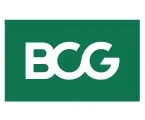
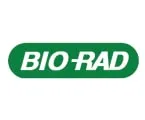


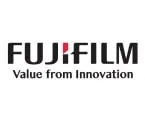

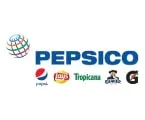
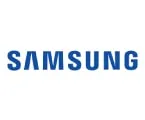






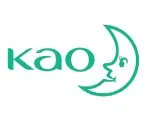

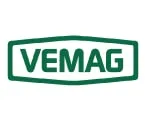
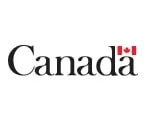

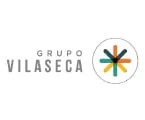


Published Date: Jan-2025
Published Date: Jul-2024
Published Date: Jul-2024
Published Date: Feb-2024
Please enter your corporate email id here to view sample report.
Subscribe to get the latest industry updates